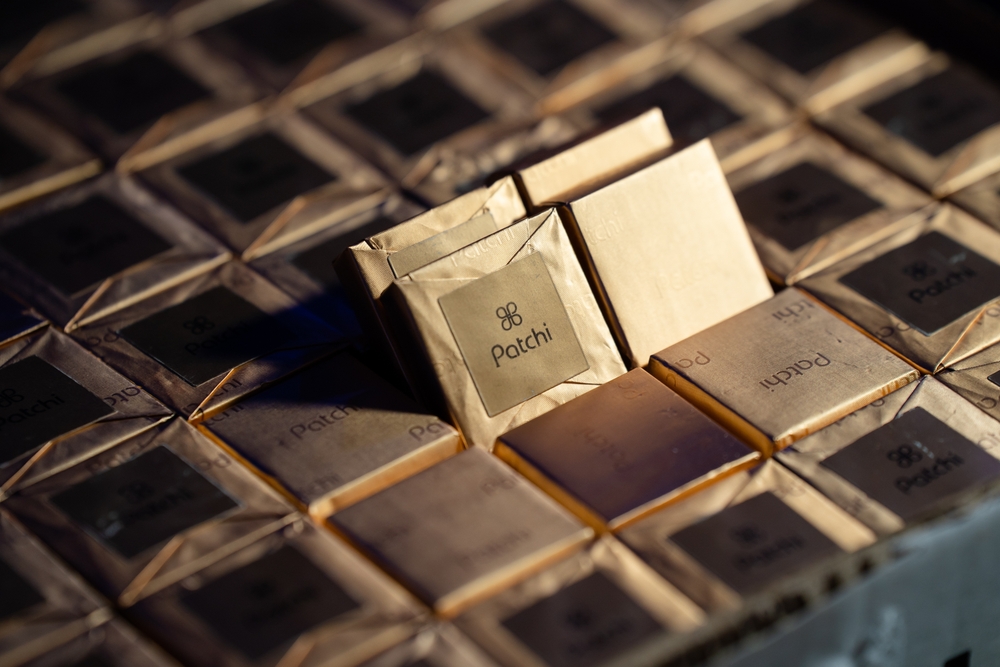RIYADH: Founder of the globally recognized Lebanese chocolate brand Patchi, Nizar Choucair, has died, leaving behind a legacy in the industry.
Choucair transformed his childhood love for chocolate into a global brand, boasting more than 200 branches worldwide.
In a message on social media, Patchi announced Choucair’s death, posting: “It is with deep sorrow that we announce the passing of Mr. Nizar Choucair, our beloved founder. Mr. Choucair was a man whose warmth and generosity touched everyone who knew him.”
Patchi added: “His visionary approach transformed chocolate into an art that evokes emotions and creates cherished memories. His legacy lives on through Patchi, a brand that has reached hearts across cultures and celebrations. We honor his memory and the extraordinary heritage he built.”
Choucair was renowned for saying: “In every piece of chocolate, there is a story to be told and a memory to be made.”
The brand’s story began in 1974 when Choucair, driven by his passion for chocolate since the age of 11, introduced the concept of chocolate gifting.
This approach elevated the food to new dimensions, enhancing customer engagement and brand loyalty.
Born in Beirut, Choucair moved to Kuwait at 18, initially working for a gas manufacturing company before returning to Lebanon to launch Patchi.

Patchi employs more than 5,000 people. Shutterstock
In 1990, he received a significant boost when Banque Du Liban gave him an interest-free loan, enabling him to modernize his factory with new machinery.
Starting with a single shop in the Lebanese capital, Beirut, Choucair’s vision and entrepreneurial spirit saw Patchi expand worldwide.
Patchi, now a household name in luxury chocolates, has 203 stores globally, with a strong presence in Lebanon, Saudi Arabia, and Bahrain, as well as Qatar, the UAE, and the UK.
The brand entered the EU market in 1995 with boutiques in Paris and London. By 1999, the company expanded to Africa with a boutique in the Ivory Coast and opened a store in the US in 2000.
Recognized by Forbes in 2005 as the top luxury brand in the Middle East and the 15th top brand in the region, Patchi continued to grow.
In 2008, Patchi Silver boutique at Harrods in London was launched, featuring a box of chocolates wrapped in genuine leather and silk, selling for £5,000.
The brand, boasting as many as 62 branches in Saudi Arabia, is celebrated for its premium ingredients and distinctive packaging, all produced in-house.
In a 2009 interview with The National, Choucair reflected on Patchi’s accessibility: “Our chocolates are not expensive at all. We sell to people who want more expensive, elaborate boxes, but we also sell to the chauffeur who comes to pick it up.”
This inclusive approach helped Patchi become a beloved brand across various demographics, according to Choucair.
The founder’s journey was marked by resilience and adaptability, navigating the challenges of the Lebanese civil war by relocating his family and operations multiple times. Despite these hurdles, his commitment to his brand never wavered. The chocolateries’ expansion continued, with Choucair personally overseeing the opening of new stores worldwide.
Under his leadership, Patchi grew to employ more than 5,000 people, maintaining a family-oriented business ethos. His five children have played active roles in the company, with three of them working alongside him..
Oussama Choucair is currently the CEO of Patchi in the UAE and sits on the board of the company’s conglomerate, which his father founded in Beirut during the 1970s.
Nizar Choucair’s passion for premium chocolate gifting has been passed down to his son, who oversees operations in the crucial UAE market.
One of Oussama Choucair’s key projects is the construction of a new factory in Dubai Industrial Park, which will become Patchi’s largest manufacturing plant worldwide.
The family remains dedicated to expanding the business into new markets by forming strategic alliances with Armenia, Azerbaijan and Brunei as well as Egypt, Kazakhstan, Kuwait, and East Asia.
In 2012, Patchi launched a new brand identity to refresh its profile and reaffirm its commitment to the values that have made it the top choice for premium chocolate lovers.
The new brand identity was presented in a creative and modern style, reflecting the distinctive and fine quality that Patchi offers through its network of boutiques across Saudi Arabia.
The unveiling event occurred at the Patchi Boutique in Jeddah, attended by Zahid Nuri, then-general manager and co-founder of Patchi in Saudi Arabia.
Nuri stated: “The launch of Patchi’s new identity embodies the company’s dedication to its customers in Saudi Arabia and highlights our commitment to providing the best services, highest quality, and a variety of the most exquisite and finest chocolate gifts. This new identity marks a breakthrough that aligns with Patchi’s significant international expansion, solidifying its position as one of the largest global brands in the chocolate industry.”



























